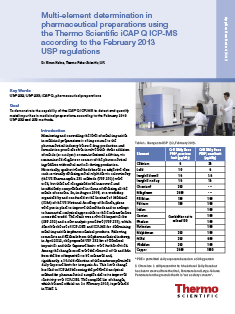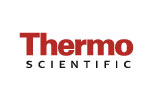Knowledge Base

View0
- View
- Add to Favorites
- Send Link
- Private
Thermo Scientific TC/EA
Thermo Fisher Scientific, Bremen, Germany
BR30034

View0
- View
- Add to Favorites
- Send Link
- Private
Thermo Scientific Gas Bench II
Thermo Fisher Scientific, Bremen, Germany
BR30036

View1
- View
- Add to Favorites
- Send Link
- Private
Thermo Scientific DELTA V Advantage DELTA V Plus
Thermo Fisher Scientific, Bremen, Germany
BR30085

View0
- View
- Add to Favorites
- Send Link
- Private
Thermo Scientific ConFlo IV Universal Interface
Thermo Fisher Scientific, Bremen, Germany
BR30140

View2
- View
- Add to Favorites
- Send Link
- Private
Thermo Scientific KIEL IV Carbonate Device
Thermo Fisher Scientific, Bremen, Germany
BR30178

View0
- View
- Add to Favorites
- Send Link
- Private
Thermo Scientific PreCon
Thermo Fisher Scientific, Bremen, Germany
BR30188

View0
- View
- Add to Favorites
- Send Link
- Private
Consumables and Spare Parts for Thermo Scientific Elemental Analyzers
Thermo Fisher Scientific, Bremen, Germany
BR30226

View0
- View
- Add to Favorites
- Send Link
- Private
Thermo Scientific GC-IRMS
Thermo Fisher Scientific, Bremen, Germany
BR30283

View3
- View
- Add to Favorites
- Send Link
- Private
Thermo Scientific 253 Ultra High resolution isotope ratio MS
Thermo Fisher Scientific, Bremen, Germany
BR30289

View1
- View
- Add to Favorites
- Send Link
- Private
Thermo Scientific 253 Plus 10 kV isotope ratio MS
Thermo Fisher Scientific, Bremen, Germany
BR30311

View0
- IRMS
- Elemental Analyzer
- Bulk Stable Isotope Analysis
- N/C Isotope Analysis
- View
- Add to Favorites
- Send Link
- Private
Comparison of Isotope Analysis with Single Reactor Combustion and Conventional Combustion in a Dual Reactor Setup
Oliver Kracht
Thermo Fisher Scientific, Bremen, Germany
TN30190
Goal: When coupled to a Thermo Scientific Isotope Ratio Mass Spectrometer (IRMS), this elemental analyzer allows bulk stable isotope analyses (BSIA) of N, C, S, H and O of organic and inorganic materials as well .as water and other liquids

View1
- IRMS
- Water stable isotopes
- Hydrological cycle
- Climate
- Ice core
- View
- Add to Favorites
- Send Link
- Private
Triple Isotopic Composition of Oxygen in Water from Ice Cores
A. Landais, R. Winkler and F. Prié
Laboratoire des Sciences du Climat et de l’Environnement, Gif sur Yvette, France
AN30287
Goal: Recent analytical developments have made it possible to measure the triple isotopic composition of oxygen in water with high precision. In this note, we concentrate on the study of δ18O, d-excess and especially the added value of 17O-excess in polar ice cores for constraining the relationship between climate and water cycle organization. We present the basis for this research and the importance of the standard calibration of this new parameter not only for laboratory nter-comparison but also comparison with modeling outputs.

View1
- IRMS
- Elemental Analyzer
- Origin Control, Squalene, Squalane, Cosmetics
- View
- Add to Favorites
- Send Link
- Private
Detection of Squalene and Squalane Origin with Flash Elemental Analyzer and Delta V Isotope Ratio Mass Spectrometer
Sylvie Guibert (1), Magali Batteau (1), Patrick Jame (1) and Thomas Kuhn (2)
1) CNRS Institut des Sciences Analytiques (ISA), Villeurbanne, France; 2) Thermo Fisher Scientific, Bremen, Germany
AN30276
Goal: The two source materials for squalene and squalane, shark liver oil and olive oil, exhibit significantly distinct carbon isotopic compositions (δ13C). This systematic difference in δ13C between the two sources can be employed to detect (a) the origin of squalane and (b) an adulteration of olive oil derived squalane by admixtures of shark liver oil derived squalane. Analysis of δ13C of squalene and squalane can be performed by means of an Elemental Analyzer coupled to an Isotope Ratio Mass Spectrometer (EA-IRMS).

View2
- IRMS
- GC-IRMS
- Compound Specific Isotope Analysis
- PAHs
- View
- Add to Favorites
- Send Link
- Private
GC-IRMS: δ13C Analysis of PAHs in Soil and Sediment Samples using High Resolution GC Coupled with Isotope Ratio MS
Dieter Juchelka
Thermo Fisher Scientific, Bremen, Germany
AN30268
Goal: Gas chromatography coupled with Isotope Ratio MS (GC-IRMS) has entered into widespread applications like environmental studies and forensics enabling compound specific isotope analysis (CSIA). Isotopic fingerprints analyzed by GC-IRMS may still provide information where classical GC/MS methods based on compound quantitation cannot. The potential of using CSIA for source differentiation of environmental polycyclic aromatic hydrocarbons (PAHs) has already been demonstrated.

View2
- IRMS
- Kiel IV carbonate device
- Paleoclimate
- Clumped Isotopes
- View
- Add to Favorites
- Send Link
- Private
Clumped-Isotope Measurements on Small Carbonate Samples with a Kiel IV Carbonate Device and a MAT 253 Mass Spectrometer
Thomas W. Schmid (1), Jens Radke (2) and Stefano M. Bernasconi (1)
1) Geologisches Institut, ETH Zurich, Switzerland; 2) Thermo Fisher Scientific, Bremen, Germany
AN30233
Goal: The advantage of a Thermo Scientific Kiel IV Carbonate Device is the completely automated sample analysis and the capability to measure small samples of less than 2 mg sample weight. This ability allows application of clumped-isotope studies in cases where the sample amount is very limited.

